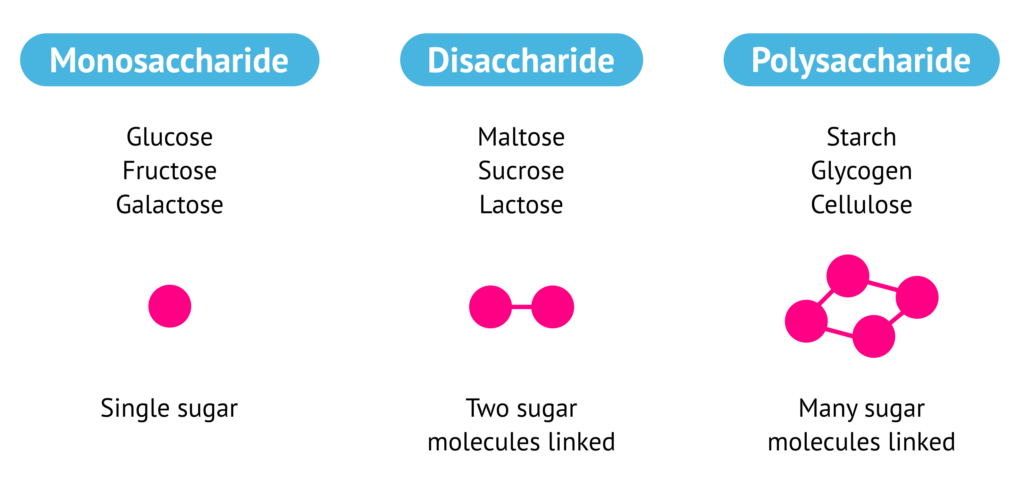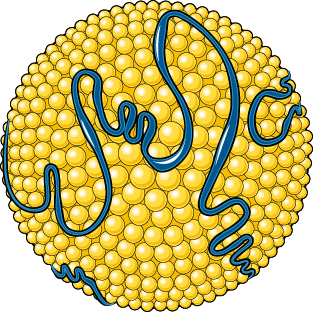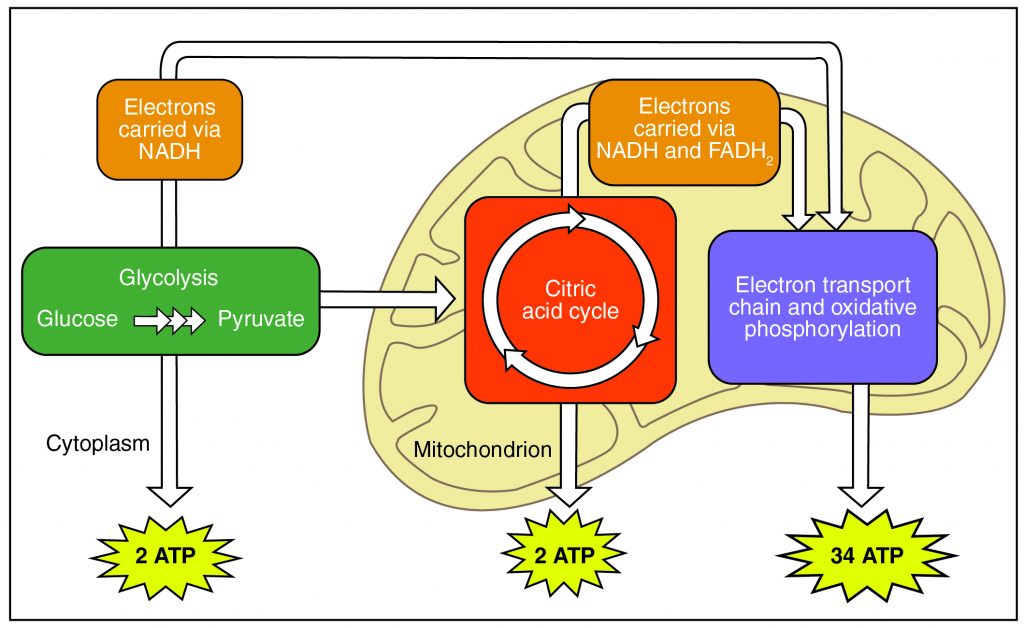Macromolecules
TEAS Exam Science – Macromolecules
In this TEAS exam science lesson, you will learn about macromolecules, including carbohydrates, lipids, proteins, and nucleic acids, which are vital for life and formed through the bonding of smaller units. Each macromolecule has a distinctive role within organisms such as plants, animals, and humans. In addition, this lesson will review how macromolecules play a part in the metabolic process, which helps maintain homeostasis.
Keywords & Concepts
- Macromolecules
- Polymers
- Monomers
- Carbohydrates
- Lipids
- Proteins
- Nucleic acids
- Hydrolysis
- Dehydration synthesis
- Condensation synthesis
- Monosaccharide
- Sucrose
- Polysaccharides
- Waxes
- Steroids
- Phospholipids
- Amino acids
- Peptide bonds
- Fibrous proteins
- Globular proteins
- DNA
- RNA
- Nucleotides
- Translation
- Metabolism
- Anabolic pathway
- Catabolic pathways
- Krebs Cycle
- Citric Acid Cycle
- Glycolysis
- Electron Transport Chain
Flashcards & Note Prompts
- Create a detailed voice memo and flashcard that answers the following questions for each macromolecule: What is its structure? What is it’s role or function? What is their functional unit? What is an example of these macromolecules?
- Create a flashcard for each keyword in this lesson.
- Create a flashcard or voice memo describing the different ways covalent bonds can be broken down.
- As you study, think of examples of how each macromolecule impacts the human body and how it is important in the healthcare setting. For example, monitoring lipid levels, such as cholesterol and triglycerides, is important for managing cardiovascular health.
- Create a flashcard to describe the two different metabolic pathways and what happens in each pathway.
- Create a flashcard for each part of cellular respiration, including glycolysis, citric acid cycle, and the electron transport chain.
- Check out this lesson for a deeper review on cellular respiration.
- Check out this lesson for a deeper review on genetics and DNA.
Introduction to Macromolecules
Macromolecules represent the intricate building blocks of life, constituting essential components within biological systems. These complex structures are comprised of polymers, which are formed through the bonding of monomers, the basic units of macromolecules, via covalent bonds.
The distinguishing feature of macromolecules is their sheer size, as they often consist of lengthy, repeating chains of monomers. This characteristic endows them with diverse functionalities crucial for biological processes. Macromolecules can be broadly classified into four main groups: carbohydrates, lipids, proteins, and nucleic acids, each with distinct roles within organisms.
- Carbohydrates: Provides the body with structural support in cells and provides energy in the form of glucose.
- Lipids: Serves as important signaling molecules, main components of cell membranes, and as energy storage.
- Proteins: This molecule performs a vast array of functions, including enzyme catalysis, transport, structural support, and immune responses.
- Nucleic Acids: DNA and RNA store and transmit genetic information which guides cellular function and inheritance.
The formation and breakdown of covalent bonds within macromolecules occur through two fundamental processes: hydrolysis and dehydration synthesis. Hydrolysis involves the addition of water molecules to break down covalent bonds within macromolecules, resulting in the separation of monomers. Conversely, dehydration synthesis, also known as condensation synthesis, entails the removal of water molecules to form covalent bonds between monomers, thereby constructing larger polymer chains. These processes are energetically significant, with hydrolysis releasing energy as bonds between monomers are broken, while dehydration synthesis requires energy input. Through these intricate mechanisms, macromolecules exhibit dynamic properties essential for sustaining life processes and maintaining biological integrity.
Carbohydrates
Carbohydrates are vital macromolecules with a basic structure composed of carbon, hydrogen, and oxygen atoms, typically in a ratio of 1:2:1. Their fundamental unit, the monosaccharide, consists of a single sugar molecule, typically containing 3 to 6 carbon atoms. When two monosaccharides undergo dehydration synthesis, they form a disaccharide, such as the commonly known sucrose, made up of glucose and fructose molecules. Further polymerization leads to the creation of polysaccharides, complex carbohydrate molecules comprising numerous monosaccharide units.
Examples include glycogen, primarily stored in animal tissues like the liver and muscles, and starch, a carbohydrate reserve in plants.
Structurally, carbohydrates can manifest in various forms, such as linear, branched, or helical arrangements, each tailored to fulfill specific biological functions.

Carbohydrates play multifaceted roles in living organisms, serving as essential energy sources and providing structural support. Animals metabolize carbohydrates for immediate energy production and store excess glucose as glycogen for future use, ensuring a constant energy supply. Similarly, plants synthesize and store carbohydrates, primarily starch, to sustain growth and development. Additionally, carbohydrates are crucial in cell recognition and signaling processes, facilitating intercellular communication. Oligosaccharides, for instance, adorn cell membranes and aid in identifying cells. Thus, carbohydrates fuel vital metabolic processes and contribute to living organisms’ intricate architecture and functionality.
Lipids
Lipids constitute a diverse group of macromolecules characterized by their hydrophobic nature and structural variability. At their core, lipids consist of long hydrocarbon chains bonded to various functional groups, such as glycerol or phosphate. Unlike carbohydrates or proteins, lipids lack a defined monomeric structure and are instead built from distinct molecular components. There are four types of lipids: fats and oils, waxes, steroids, and phospholipids.
Fats and oils: These lipids are formed from glycerol molecules linked to three fatty acid chains, serving as efficient energy storage molecules in both animals and plants.
Waxes: Comprising long fatty acid chains attached to alcohol groups, providing waterproofing and protective coatings for organisms.
Steroids: Steroids, exemplified by cholesterol, feature a characteristic four-ring structure and play crucial roles as signaling molecules and components of cell membranes.
Phospholipids: Lipids are composed of glycerol, two fatty acid chains, and a phosphate group, constitute the primary building blocks of cell membranes, forming bilayer structures that regulate the passage of molecules into and out of cells.

Illustration of a chylomicron, a drop of fat in the blood after absorption in the small intestine. [source]
Lipids serve various essential functions in biological systems, ranging from energy storage and structural support to cell signaling and membrane formation. Animals utilize lipids, particularly fats and oils, as concentrated energy reserves, aiding in insulation and cushioning vital organs. Lipids also contribute to cell membranes’ structural integrity, facilitating cellular communication and transport processes. Plants utilize lipids for energy storage, with oils found in seeds serving as energy-rich reserves for germination and growth. Moreover, lipids play critical roles in hormone regulation and insulation in both animals and plants, highlighting their significance in maintaining physiological balance and homeostasis. Thus, lipids represent indispensable macromolecules essential for the survival and functioning of organisms across diverse biological contexts
Proteins
Proteins are composed of long chains of amino acids, each containing a central carbon atom, an amine group, a carboxylic acid group, and a unique side chain (R group). These side chains determine the specific properties of each amino acid. When amino acids bond together through peptide bonds, they form intricate protein structures. The arrangement of amino acids in proteins contributes to their diverse shapes and functions.
Proteins play numerous vital roles in biological systems. They act as enzymes that catalyze biochemical reactions, facilitate cell signaling, provide structural support, and serve as transport molecules. For example, enzymes accelerate chemical reactions without being consumed in the process, enabling essential metabolic processes to occur efficiently. Additionally, proteins like collagen and keratin provide structural support in connective tissues and hair, respectively, while hemoglobin transports oxygen in the bloodstream.
Animals and plants utilize proteins for many functions crucial to their survival and growth. In animals, proteins are building blocks for tissues, hormones, and enzymes necessary for metabolism. Dietary proteins are broken down into amino acids during digestion and then used to synthesize new proteins or as energy sources. Plants similarly utilize proteins for structural support, enzyme activity, and signaling pathways. Additionally, proteins play significant roles in plant defense mechanisms and nutrient storage.
Proteins can be classified based on their solubility and structure into fibrous and globular proteins.
Fibrous proteins, such as collagen, have long, extended structures and are insoluble in water, providing tissue strength and support.
In contrast, globular proteins, like enzymes and antibodies, have compact, spherical shapes and are soluble in water, allowing them to perform various biological functions.

Strand of collagen [Source]
Nucleic acids
Nucleic acids store and transfer genetic information essential for life processes. These molecules are composed of nucleotides, which consist of three main components: a nitrogenous base, a sugar molecule (either ribose in RNA or deoxyribose in DNA), and a phosphate group.
The sequence of nucleotides within nucleic acids forms the genetic code, dictating the synthesis of proteins and other cellular activities. There are two primary types of nucleic acids: deoxyribonucleic acid (DNA) and ribonucleic acid (RNA).

DNA, structured as a double helix, serves as the repository of genetic information, containing the instructions necessary for organisms’ development, growth, and functioning. RNA, typically single-stranded, plays crucial roles in protein synthesis by transcribing and translating the genetic code stored in DNA into functional proteins.
Nucleic acids play pivotal roles in transmitting genetic information from one generation to the next and in regulating cellular processes. DNA stores genetic information in its sequence of nucleotide bases, forming genes that encode specific proteins and determine an organism’s traits.
During protein synthesis, DNA is transcribed into RNA molecules, which carry the genetic instructions from the nucleus to the cytoplasm, where ribosomes use them as templates for assembling proteins. This process, known as translation, involves the complementary base pairing between the nucleotide bases of RNA (uracil, adenine, cytosine, and guanine) and those of DNA, ensuring the accurate transfer of genetic information. Through these intricate mechanisms, nucleic acids orchestrate the fundamental processes underlying life, from cellular metabolism to organismal development and adaptation.
| Bio molecule |
Monomers | Function | Example |
|---|---|---|---|
| Protein | Amino acid | A substance that provides the overall basic structure and function for a cell | Enzymes |
| Carbohydrate | Monosaccharides | A form of storage for energy | Glucose Cellulose Starch Disaccharides |
| Lipid | Glycerol and fatty acids | A type of fat that provides a long-term storage for energy | Fats Steroids Oils Hormones |
| Nucleic Acid | Nucleotides | A substance that aids in protein synthesis and transmission of genetic information | DNA RNA |
The Metabolic Process
Macromolecules play integral roles in biological systems by fulfilling diverse functions critical for the survival and functioning of organisms. With their pivotal roles in cellular function established, it is crucial to explore how these macromolecules actively participate in metabolic processes to maintain homeostasis and support life. Metabolism in the human body refers to the complex network of biochemical processes that occur to maintain life. It consists of two main types of pathways: anabolic pathways and catabolic pathways.
A metabolic pathway is a series of several chemical reactions that take place cyclically to either build or break down molecules. An anabolic pathway involves the synthesis of new molecules. These pathways require an input of energy. Catabolic pathways involve the breakdown of molecules. Energy is released from a catabolic pathway.
Living things use several metabolic pathways. The most well-studied pathways include those that make up a group of processes that ALL living things undergo, cellular respiration. Cellular respiration can be broken down into three stages: glycolysis, the citric acid cycle, also known as the Krebs Cycle, and the electron transport chain. These metabolic pathways either release or add energy during a reaction. They also provide a continual flow of energy to living things.
Glycolysis: Occurs in the cytoplasm and breaks down glucose into energy, carbon dioxide, and water. It produces a net gain of 2 ATP molecules, 2 pyruvate molecules, and 2 NADH molecules. Initially, 2 ATP molecules are used in the “investment phase,” and 4 ATP molecules are produced, resulting in a net gain of 2 ATP. Glycolysis generates ATP and produces pyruvate and NADH for further energy production in cellular respiration. Prokaryotic organisms can only perform glycolysis due to their lack of membrane bound organelles (mitochondria).
Citric Acid Cycle: Pyruvate from glycolysis is transported to the mitochondria, producing 2 ATP molecules, 6 carbon dioxide molecules, 6 NADH molecules, and 2 FADH2 molecules. This cycle provides the NADH needed to start the electron transport chain, the final step of cellular respiration.
Electron Transport Chain and Oxidative Phosphorylation: This process occurs in the inner mitochondrial membrane, using electrons from NADH and FADH2 produced in earlier steps. The electrons travel through the electron transport chain, releasing energy to pump protons across the membrane, creating a proton gradient. This gradient drives ATP synthase to produce ATP from ADP. Oxygen attracts the electrons, helping create the proton gradient. This process produces about 30-32 ATP molecules, contributing to the total 34-36 ATP molecules generated during cellular respiration.
The following image provides an overview of cellular respiration. Glycolysis, the citric acid cycle, the electron transport chain, and oxidative phosphorylation collectively make up this process. Cellular respiration takes place in a cell and is used to convert energy from nutrients into ATP.

Let’s Review
- Macromolecules are essential building blocks of life, composed of polymers formed through the bonding of monomers via covalent bonds.
- Carbohydrates, lipids, proteins, and nucleic acids are the four main groups of macromolecules, each serving distinct roles in biological systems.
- Hydrolysis and dehydration synthesis are fundamental processes involved in the formation and breakdown of covalent bonds within macromolecules.
- Carbohydrates serve as energy sources and structural components, with examples like sucrose, glycogen, and starch.
- Lipids function as energy reserves, membrane components, and signaling molecules, including fats and oils, waxes, steroids, and phospholipids.
- Proteins catalyze biochemical reactions, provide structural support, facilitate cell signaling, and serve as transport molecules
- Nucleic acids store and transmit genetic information, with DNA and RNA playing pivotal roles in protein synthesis and cellular processes.
- Together, these macromolecules form the intricate machinery of life, ensuring the proper functioning and survival of organisms.
- Cellular respiration generates ATP, providing the energy needed for essential cellular processes.
- Cellular respiration is made up of the following stages: Glycolysis, Citric acid cycle, Electron Transport Chain, and Oxidative Phosphorylation.
- Through these stages, cellular respiration extracts energy from glucose and other molecules to sustain life processes and maintain cellular homeostasis.
Subscribe to the online course to gain access to the full lesson content.
If your not ready for a subscription yet, be sure to check out our free practice tests and sample lesson at this link
